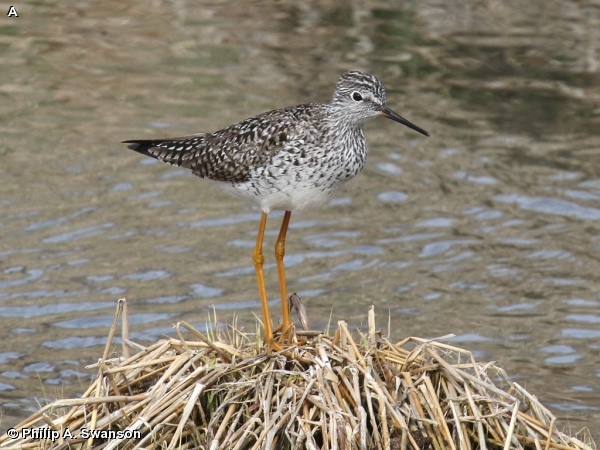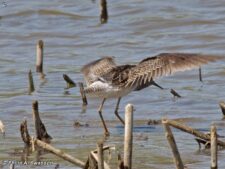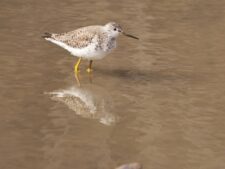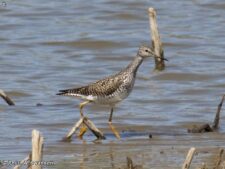
10.5 inches long. The Lesser Yellowlegs is a medium sized shorebird with long legs and a relatively short bill. The legs are yellow or rarely bright orange. The all dark bill is thinner, shorter, and straighter that that of a Greater Yellowlegs (Tringa melanoleuca). The Lesser Yellowlegs has gray and black mottled upperparts, white underparts and streaked upper breast and sides. The white lower rump and dark-barred tail are easily visible in flight. Breeding birds tend to be more heavily streaked on the head and neck than non-breeding and juvenile birds. During breeding the upper flanks may become slightly barred as compared to the Greater Yellowlegs which becomes heavily barred on the upper flanks.
The Lesser Yellowlegs is common in the Omaha area during spring (April and May) migration and fall migration (late June, July and early September). It might be uncommonly seen in Fontenelle Forest at a wet area such as along the shore of the Great Marsh.
Lesser Yellowlegs breed from western Alaska and Canada east to western Quebec. It spends winters on coasts from southern California and Virginia southward, and along the Gulf coast at its preferred habitats including coastal mudflats, pans and lagoons, inland lakes, ponds, rivers, sewage works, and flooded grasslands. A group of yellowlegs are collectively known as an “incontinence” of yellowlegs. The soft “tew” call of the Lesser Yellowlegs is generally given from one to three times, particularly when taking flight.
Disclaimer: The content of NatureSearch is provided by dedicated volunteer Naturalists of Fontenelle Forest who strive to provide the most accurate information available. Contributors of the images retain their copyrights. The point of contact for this page is: Phil Swanson.




